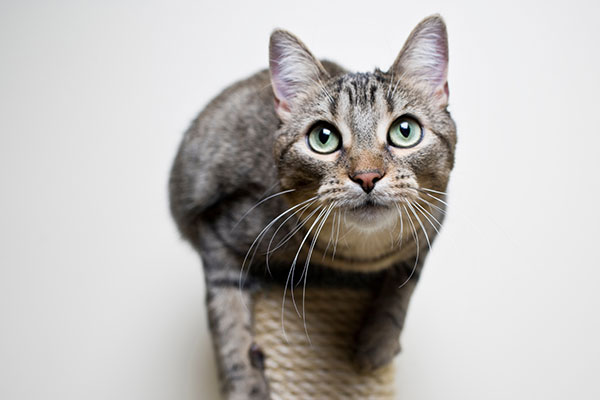Declawing Cats: Worse Than a Manicure
Overview
All provinces in Canada have banned declawing except for Ontario. Friends of HSI opposes declawing except for the rare cases when it is necessary for medical purposes, such as the removal of cancerous nail bed tumors.
People who are worried about being scratched, especially those with immunodeficiencies or bleeding disorders, may be told incorrectly that their health will be protected by declawing their cats. However, infectious disease specialists don’t recommend declawing. The risk from scratches for these people is less than those from bites, cat litter, or fleas carried by their cats.
The Truth About Cats and Scratching
Cats are usually about 8 weeks old when they begin scratching. That’s the ideal time to train kittens to use a scratching post and allow nail trims. Pet caregivers should not consider declawing a routine prevention for unwanted scratching. Declawing can actually lead to an entirely different set of behavior problems that may be worse than shredding the couch.

What Is Declawing?

Declawing traditionally involves the amputation of the last bone of each toe. If performed on a human being, it would be like cutting off each finger at the last knuckle.
It is an unnecessary surgery that provides no medical benefit to the cat. Educated pet parents can easily train their cats to use their claws in a manner that allows everyone in the household to live together happily.
How Is a Cat Declawed?
Another method is laser surgery, in which a small, intense beam of light cuts through tissue by heating and vaporizing it. However, it’s still the amputation of the last toe bone of the cat and carries with it the same long-term risks of lameness and behavioral problems as does declawing with scalpels or clippers.
If performed on a human being, declawing would be like cutting off each finger at the last knuckle.
A third procedure is the tendonectomy, in which the tendon that controls the claw in each toe is severed. The cat keeps their claws, but can’t control them or extend them to scratch. This procedure is associated with a high incidence of abnormally thick claw growth. Therefore, more frequent and challenging nail trims are required to prevent the cat’s claws from snagging on people, carpet, furniture, and drapes, or from growing into the cat’s paw pads.
Because of complications, a cat who has been given a tendonectomy may require declawing later. Although a tendonectomy is not actually amputation, a 1998 study published in the “Journal of the American Veterinary Medical Association” found the incidence of bleeding, lameness, and infection was similar between tendonectomy and declawing.
Some Negative Effects of Declawing

For several days after surgery, shredded newspaper is typically used in the litter box to prevent litter from irritating declawed feet. This unfamiliar litter substitute, accompanied by pain when scratching in the box, may lead cats to stop using the litter box. Some cats may become biters because they no longer have their claws for defense.
Try Our Tips for Stopping Unwanted Scratching
- Keep their claws trimmed to minimize damage to household items.
- Provide stable scratching posts and boards around your home. Offer different materials like carpet, sisal, wood, and cardboard, as well as different styles (vertical and horizontal). Use toys and catnip to entice your cat to use the posts and boards.
- Ask your veterinarian about soft plastic caps (like Soft Paws®) that are glued to the cat’s nails. They need to be replaced about every six weeks.
- Attach a special tape (like Sticky Paws®) to furniture to deter your cat from unwanted scratching.
Don’t Subject Your Cat to Unnecessary Procedures




